Matt Rees's Blog - Posts Tagged "write-a-thriller"
Write a thriller: How Don Winslow propels a plot around its Midpoint
The key to the pace of a thriller lies in the Midpoint
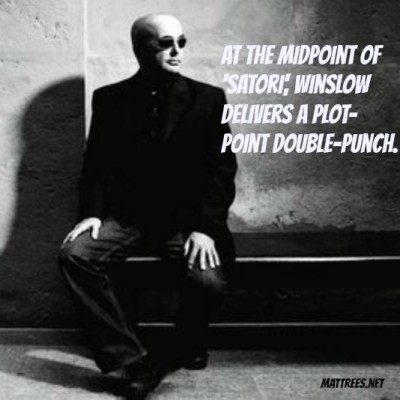 The Midpoint is a plot point that lies, of course, at the halfway point of the book. What does it do? It propels the hero out of the first part of Act II, where s/he has been encountering new signs of the bad guys and their dirty dealings. It shoots the hero into the breakneck action of the second part of Act II, where the bad guys close in on the hero, trouble piles up on the hero, and it looks as though s/he is going to lose.
The Midpoint is a plot point that lies, of course, at the halfway point of the book. What does it do? It propels the hero out of the first part of Act II, where s/he has been encountering new signs of the bad guys and their dirty dealings. It shoots the hero into the breakneck action of the second part of Act II, where the bad guys close in on the hero, trouble piles up on the hero, and it looks as though s/he is going to lose.
How do you create a good Midpoint? A couple of tips:
Kill someone to add a heightened element of danger and a new impetus for the hero's chase
Introduce a new character whose presence adds to the danger
Change the nature of the threat to the hero dramatically
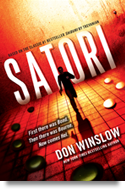 The king of the threat-change is Don Winslow. Read his fabulous Satori for an example that'll take your breath away.
The king of the threat-change is Don Winslow. Read his fabulous Satori for an example that'll take your breath away.
Without giving too much away, the reader spends the first half of Satori thinking the hero has to do a particular thing, after which he'll be safe. Instead, at the Midpoint of Satori, Winslow delivers a plot-point double punch. The hero accomplishes that particular thing -- at great risk and with much tension. Only to discover immediately that he has been betrayed. For the rest of the book, he faces entirely new risks. The reader experiences the same sudden shift and confusion as the hero. That means, tension. Which is a good thing in a thriller.
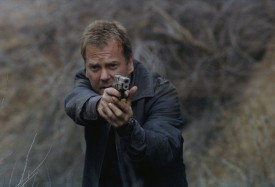 The show 24 does this too. Ever noticed how Jack Bauer is fighting one lot of bad guys for the first 12 hours, only to realize half way through the season that the real bad guy is someone completely different with an entirely different plan?
The show 24 does this too. Ever noticed how Jack Bauer is fighting one lot of bad guys for the first 12 hours, only to realize half way through the season that the real bad guy is someone completely different with an entirely different plan?
Works, doesn't it?
Don't forget to get my FREE ebook. It's packed with original, exclusive crime stories.
 The Midpoint is a plot point that lies, of course, at the halfway point of the book. What does it do? It propels the hero out of the first part of Act II, where s/he has been encountering new signs of the bad guys and their dirty dealings. It shoots the hero into the breakneck action of the second part of Act II, where the bad guys close in on the hero, trouble piles up on the hero, and it looks as though s/he is going to lose.
The Midpoint is a plot point that lies, of course, at the halfway point of the book. What does it do? It propels the hero out of the first part of Act II, where s/he has been encountering new signs of the bad guys and their dirty dealings. It shoots the hero into the breakneck action of the second part of Act II, where the bad guys close in on the hero, trouble piles up on the hero, and it looks as though s/he is going to lose.How do you create a good Midpoint? A couple of tips:
Kill someone to add a heightened element of danger and a new impetus for the hero's chase
Introduce a new character whose presence adds to the danger
Change the nature of the threat to the hero dramatically
 The king of the threat-change is Don Winslow. Read his fabulous Satori for an example that'll take your breath away.
The king of the threat-change is Don Winslow. Read his fabulous Satori for an example that'll take your breath away.Without giving too much away, the reader spends the first half of Satori thinking the hero has to do a particular thing, after which he'll be safe. Instead, at the Midpoint of Satori, Winslow delivers a plot-point double punch. The hero accomplishes that particular thing -- at great risk and with much tension. Only to discover immediately that he has been betrayed. For the rest of the book, he faces entirely new risks. The reader experiences the same sudden shift and confusion as the hero. That means, tension. Which is a good thing in a thriller.
 The show 24 does this too. Ever noticed how Jack Bauer is fighting one lot of bad guys for the first 12 hours, only to realize half way through the season that the real bad guy is someone completely different with an entirely different plan?
The show 24 does this too. Ever noticed how Jack Bauer is fighting one lot of bad guys for the first 12 hours, only to realize half way through the season that the real bad guy is someone completely different with an entirely different plan?Works, doesn't it?
Don't forget to get my FREE ebook. It's packed with original, exclusive crime stories.
Published on March 13, 2014 23:46
•
Tags:
24, crime-fiction, don-winslow, how-to-write, jack-bauer, satori, thrillers, write-a-thriller, writing
Write a thriller: Know the plot's destination before you start
Figure out the end of the novel before you start to write
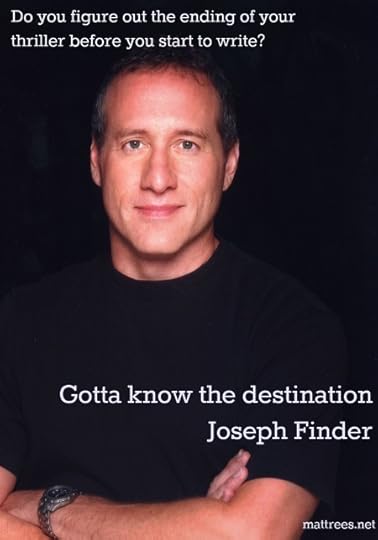 The great thriller writer Joseph Finder told me that figuring out the end of the novel is a key to getting started. “Gotta know the destination,” he said. (More from Joseph on plot.)
The great thriller writer Joseph Finder told me that figuring out the end of the novel is a key to getting started. “Gotta know the destination,” he said. (More from Joseph on plot.)
Take a look at my diagram of the outline for a thriller (You've seen it before). The two pieces I fill in first are the Set Up in Act I and the Payoff in Act III, where the hero prevents whatever the bad guy aims to do.

Why do it that way? Because you gotta know the destination before you start on the journey. If you don’t, you’ll meander. That nice rising diagonal line across the diagram will droop and zig zag -- and that means losing momentum. You’ll waste a lot of energy going in the wrong direction. That’s how novelists get deflated and novels get dropped. Plot those two elements first and the rest is just a matter of connecting two dots.
By the way, if you haven't read Joseph Finder, my favorites are Paranoia and Killer Instinct. Looking at the plot diagram, both of those novels have a great set-up and a knockout payoff.

Get a FREE ebook of my crime stories.
 The great thriller writer Joseph Finder told me that figuring out the end of the novel is a key to getting started. “Gotta know the destination,” he said. (More from Joseph on plot.)
The great thriller writer Joseph Finder told me that figuring out the end of the novel is a key to getting started. “Gotta know the destination,” he said. (More from Joseph on plot.)Take a look at my diagram of the outline for a thriller (You've seen it before). The two pieces I fill in first are the Set Up in Act I and the Payoff in Act III, where the hero prevents whatever the bad guy aims to do.

Why do it that way? Because you gotta know the destination before you start on the journey. If you don’t, you’ll meander. That nice rising diagonal line across the diagram will droop and zig zag -- and that means losing momentum. You’ll waste a lot of energy going in the wrong direction. That’s how novelists get deflated and novels get dropped. Plot those two elements first and the rest is just a matter of connecting two dots.
By the way, if you haven't read Joseph Finder, my favorites are Paranoia and Killer Instinct. Looking at the plot diagram, both of those novels have a great set-up and a knockout payoff.

Get a FREE ebook of my crime stories.
Published on March 20, 2014 14:10
•
Tags:
crime-fiction, how-to-write, joseph-finder, plotting, thrillers, write-a-thriller, writing, writing-tips
Write a thriller: Bad experiences make you a better writer
Remember how it feels to feel bad, endure it positively, and write it down
When something bad happens to a writer, the experience is great material for something bad happening to your characters. Remember the feelings, the way your mind processed it and the sensations of tension in your heart, your veins. Get it all down on paper and save it for when you need to give those emotions to a character. The experience can teach you how to be a better person and how to be a better writer.

This ought to make you feel better at those low times. Because you know it’ll come in useful.
British writer Alan Bennett is known for his mordant wit, for making dour experiences seem somehow wistful and alive. “For a writer, nothing is ever quite as bad as it is for other people,” Bennett writes, “because, however dreadful, it may be of use.”
Negative experiences can change you as a person -- for the better, if you approach them positively.
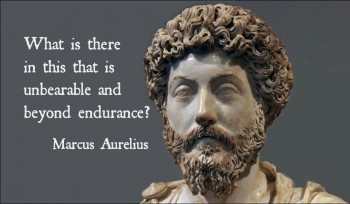
The Roman emperor and stoic philosopher Marcus Aurelius wrote that a negative experience should be recognized for what it is: something that has happened, and nothing more. Our response is far more important than the event itself. "What is there in this that is unbearable and beyond endurance?" he wrote. The answer is: Nothing at all.
With that attitude you can take the negative experience and use it for your fiction, while also growing spiritually with a sense of acceptance.

Read more Write a thriller posts with tips and analysis from Stephen King, Raymond Chandler, Dan Brown, and many other great novelists.
Get a FREE ebook of my crime stories.
When something bad happens to a writer, the experience is great material for something bad happening to your characters. Remember the feelings, the way your mind processed it and the sensations of tension in your heart, your veins. Get it all down on paper and save it for when you need to give those emotions to a character. The experience can teach you how to be a better person and how to be a better writer.

This ought to make you feel better at those low times. Because you know it’ll come in useful.
British writer Alan Bennett is known for his mordant wit, for making dour experiences seem somehow wistful and alive. “For a writer, nothing is ever quite as bad as it is for other people,” Bennett writes, “because, however dreadful, it may be of use.”
Negative experiences can change you as a person -- for the better, if you approach them positively.

The Roman emperor and stoic philosopher Marcus Aurelius wrote that a negative experience should be recognized for what it is: something that has happened, and nothing more. Our response is far more important than the event itself. "What is there in this that is unbearable and beyond endurance?" he wrote. The answer is: Nothing at all.
With that attitude you can take the negative experience and use it for your fiction, while also growing spiritually with a sense of acceptance.

Read more Write a thriller posts with tips and analysis from Stephen King, Raymond Chandler, Dan Brown, and many other great novelists.
Get a FREE ebook of my crime stories.
Published on April 03, 2014 23:07
•
Tags:
alan-bennett, crime-fiction, how-to-write, marcus-aurelius, thrillers, write-a-thriller, writing-tips
Write a thriller: Make it funny
Comedy is a great way to draw readers to a character
Thriller writers need to make their characters—particularly the hero—appealing to readers. That’s not always easy, because even the hero of a thriller might have to do some unappealing, nasty things to escape the bad guys and save the day. One important tool in the writer’s box is humor.

We like funny guys. Even when their humor is dark. Take Elmore Leonard’s Chili Palmer in “Get Shorty.” An old friend inquires about a mutual acquaintance in Florida:
Reptition of lines can build a character too. In “Get Shorty,” Chili instructs Harry, a movie producer, about how to take control of a conversation with a mobster. “Look at me,” he says. What the mobster is supposed to see is the toughness underlying Chili’s cheerful exterior. The humor comes when Harry uses the line on Ray Barboni, a Miami gangster who believes he’s owed money. Barboni sees Harry's weakness and superficiality--and no toughness. “Look at this,” Ray says to Harry, as he smashes a telephone across his nose.
Elmore Leonard recognized the importance of humor when building his “style” early on. He wrote of Hemingway that “He was my first big influence because he made writing look easy. Then I realized that Hemingway didn’t have much of a sense of humor.”
So Elmore took the apparent simplicity of Hemingway’s style and added what he called “attitude.” That’s where the humor often comes in. Elmore gives his character an “attitude,” which is typically built on speech tics and repeated tropes.
Language that might be considered “stupid cool” is one of Elmore’s techniques for creating attitude. Quentin Tarantino bastardized it, but Elmore never abused it. When one of his characters calls Barboni’s choice of weapon “the fucking Fiat of guns,” it’s funny. But it’s funnier because Barboni immediately shoots the guy dead with the Fiat of guns.
Now that Elmore’s dead, the best place to look for humor in a thriller—particularly humor that adds depth to character—is in the books of Keith Thomson. Thomson’s the new Elmore Leonard.
In “Once a Spy,” the main character, Charlie, is in debt to a loan shark. He needs a favor from a fairly dumb pal. Here’s a bit of their dialogue:
That’s funny. But what makes it even better is to read it with the next line:
Like Elmore Leonard, what Thomson does here is leave the laughing to the reader. The characters are into their discussion on a serious level. They aren’t wisecracking. They aren’t trying to be funny. They ARE funny, because their character is being revealed. But they don’t know it. That’s the trick.
 Get a FREE ebook of my crime stories.
Get a FREE ebook of my crime stories.
Thriller writers need to make their characters—particularly the hero—appealing to readers. That’s not always easy, because even the hero of a thriller might have to do some unappealing, nasty things to escape the bad guys and save the day. One important tool in the writer’s box is humor.

We like funny guys. Even when their humor is dark. Take Elmore Leonard’s Chili Palmer in “Get Shorty.” An old friend inquires about a mutual acquaintance in Florida:
“How is Momo these days?”
“Dead.”
Reptition of lines can build a character too. In “Get Shorty,” Chili instructs Harry, a movie producer, about how to take control of a conversation with a mobster. “Look at me,” he says. What the mobster is supposed to see is the toughness underlying Chili’s cheerful exterior. The humor comes when Harry uses the line on Ray Barboni, a Miami gangster who believes he’s owed money. Barboni sees Harry's weakness and superficiality--and no toughness. “Look at this,” Ray says to Harry, as he smashes a telephone across his nose.
Elmore Leonard recognized the importance of humor when building his “style” early on. He wrote of Hemingway that “He was my first big influence because he made writing look easy. Then I realized that Hemingway didn’t have much of a sense of humor.”
So Elmore took the apparent simplicity of Hemingway’s style and added what he called “attitude.” That’s where the humor often comes in. Elmore gives his character an “attitude,” which is typically built on speech tics and repeated tropes.
Language that might be considered “stupid cool” is one of Elmore’s techniques for creating attitude. Quentin Tarantino bastardized it, but Elmore never abused it. When one of his characters calls Barboni’s choice of weapon “the fucking Fiat of guns,” it’s funny. But it’s funnier because Barboni immediately shoots the guy dead with the Fiat of guns.
Now that Elmore’s dead, the best place to look for humor in a thriller—particularly humor that adds depth to character—is in the books of Keith Thomson. Thomson’s the new Elmore Leonard.
In “Once a Spy,” the main character, Charlie, is in debt to a loan shark. He needs a favor from a fairly dumb pal. Here’s a bit of their dialogue:
“I’m short by north of fifteen. If I don’t have it by tomorrow night, Grudzev’s going to fill a cup with sand.”
“And make you drink it?”
“Why would I care if he’s just filling a cup with sand?”
That’s funny. But what makes it even better is to read it with the next line:
“I’m short by north of fifteen. If I don’t have it by tomorrow night, Grudzev’s going to fill a cup with sand.”
“And make you drink it?”
“Why would I care if he’s just filling a cup with sand?”
“That could kill you, couldn’t it?”
Like Elmore Leonard, what Thomson does here is leave the laughing to the reader. The characters are into their discussion on a serious level. They aren’t wisecracking. They aren’t trying to be funny. They ARE funny, because their character is being revealed. But they don’t know it. That’s the trick.
 Get a FREE ebook of my crime stories.
Get a FREE ebook of my crime stories.
Published on May 30, 2014 00:46
•
Tags:
alan-bennett, crime-fiction, elmore-leonard, how-to-write, humor, keith-thomson, marcus-aurelius, thrillers, write-a-thriller, writing-tips
Writing a book is like rock'n'roll
The Woodstock Revival Nightmare featuring Matt Rees on "deaf bass"
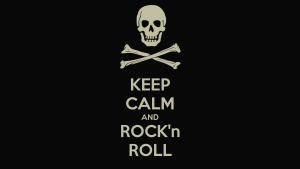 A few years ago I played a Woodstock Revival gig. It didn't go well. In fact, I wrote an entire article about the various live-show nightmares involved. And why you shouldn't care, because it's rock'n'roll. I think it applies to writing too. Just do it. Clean it up later if you like, but while you're doing it just enjoy it and screw what it sounds/reads like. Hemingway said "first drafts are shit." Let's call this a first draft of a Credence song:
A few years ago I played a Woodstock Revival gig. It didn't go well. In fact, I wrote an entire article about the various live-show nightmares involved. And why you shouldn't care, because it's rock'n'roll. I think it applies to writing too. Just do it. Clean it up later if you like, but while you're doing it just enjoy it and screw what it sounds/reads like. Hemingway said "first drafts are shit." Let's call this a first draft of a Credence song:
http://youtu.be/KLIr4PQ1Gsk

 A few years ago I played a Woodstock Revival gig. It didn't go well. In fact, I wrote an entire article about the various live-show nightmares involved. And why you shouldn't care, because it's rock'n'roll. I think it applies to writing too. Just do it. Clean it up later if you like, but while you're doing it just enjoy it and screw what it sounds/reads like. Hemingway said "first drafts are shit." Let's call this a first draft of a Credence song:
A few years ago I played a Woodstock Revival gig. It didn't go well. In fact, I wrote an entire article about the various live-show nightmares involved. And why you shouldn't care, because it's rock'n'roll. I think it applies to writing too. Just do it. Clean it up later if you like, but while you're doing it just enjoy it and screw what it sounds/reads like. Hemingway said "first drafts are shit." Let's call this a first draft of a Credence song:http://youtu.be/KLIr4PQ1Gsk

Published on June 28, 2014 22:50
•
Tags:
alan-bennett, crime-fiction, elmore-leonard, how-to-write, humor, keith-thomson, marcus-aurelius, rock-n-roll, thrillers, write-a-thriller, writing-tips



